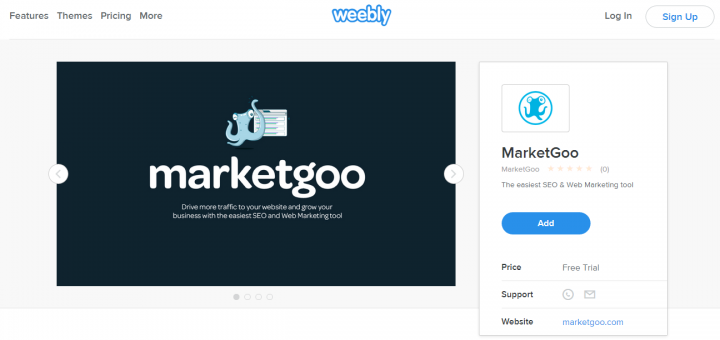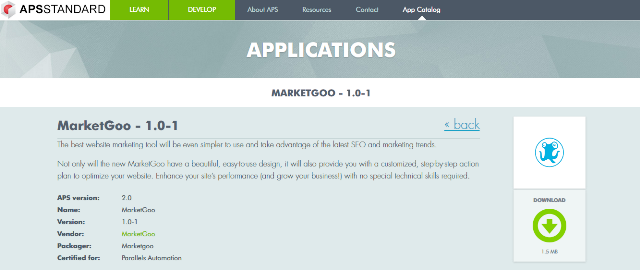Hosting companies have evolved dramatically, as they adapt their offerings to consumer demands and requirements.
Not too long ago, until the middle of the past decade, the hosting provider client was a very technical customer that required plentiful and deep information about the different hosting plans available as well as a robust email system. Hosters were comfortable with this, and we just have to take a look at any hosting website of that time to see that. Here’s a picture of 1&1 from 2005, to illustrate this point:
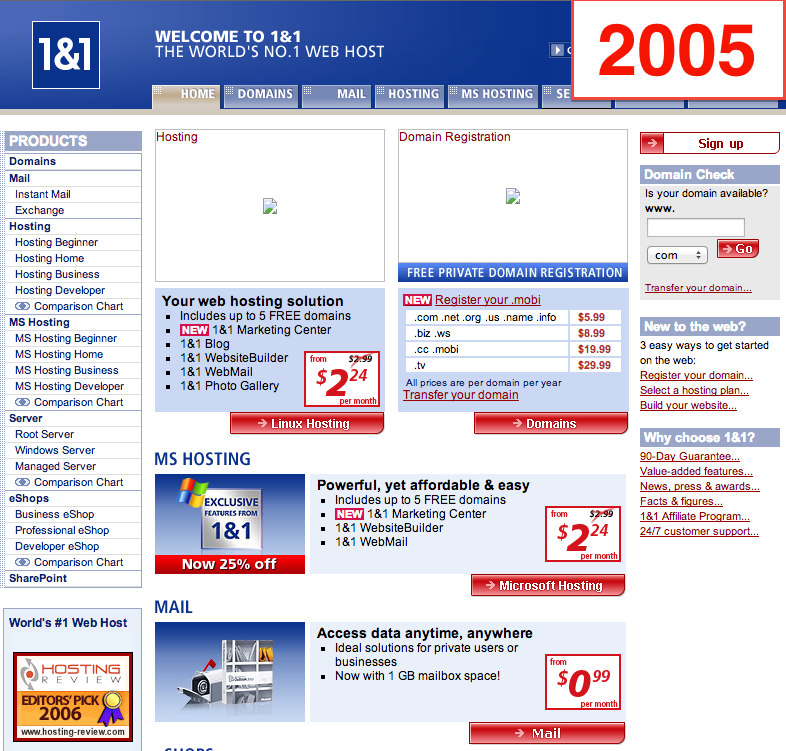
As you can see, there’s a lage amount of information about the different server capabilities but very few (except for a small link) links to additional services, in this case a website builder.
Hosting commoditization
From 2006 onwards, hosting services start to be commoditized and more SMBs and individuals that were out of the market started online businesses. But as their technical knowledge decreased, they required additional features such as website builders to help them kick off their online businesses.
If we continue our time travel to 2010, again to the 1&1 website, we will see how things evolved in just 4 years:
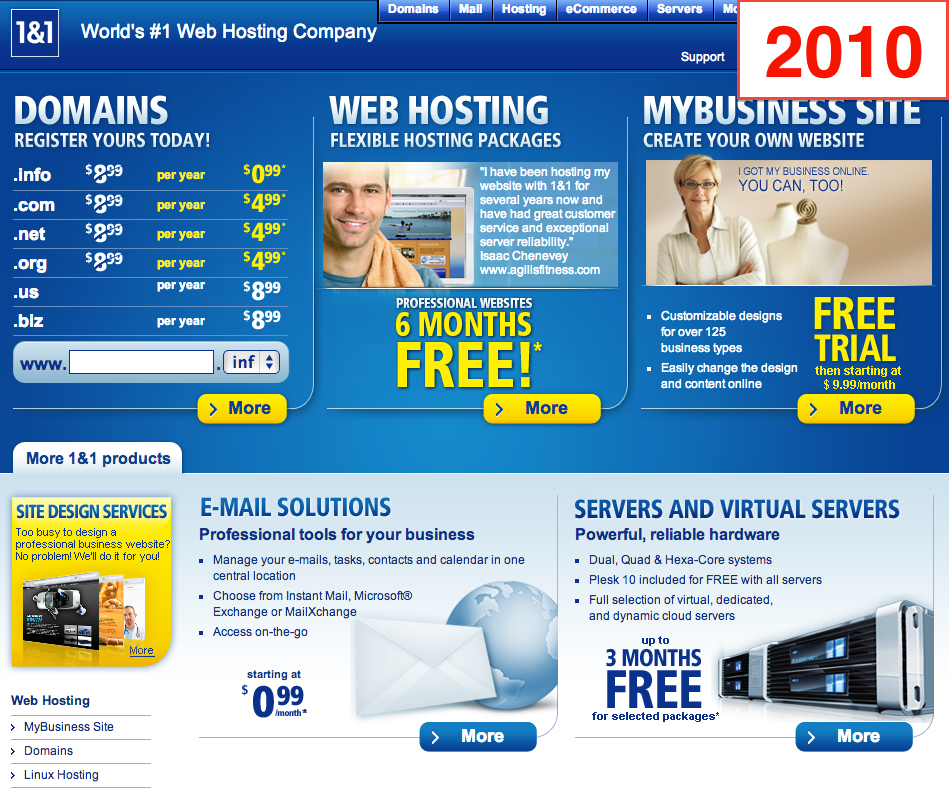
Well, there are just 4 years between the 2 images, quite a bit of a change right?
Despite the new, modern design, there’s a significant change, and it’s that they promote a website builder in a prime position. At this point, hosters are no longer utility providers, but value-added service providers.
“hosters are no longer utility providers, but value-added service providers”
Hosting providers can do this, because they have the trust of their customers, and because helping a customer start their online journey not only makes an additional direct revenue with the sale of services, but it also makes that customer stay longer with the hosting company, because his online success is more likely to take place.
Hosting providers struggle to differentiate their services
This story puts us back in the present day, where website builders are common and hosting providers struggle to differentiate their services. There’s a continuous price war driving margins down, so hosters need to find additional revenue streams to succeed in a saturated market.
But this increase of customers and companies with published websites has led to some consequences, the most important being a struggle to engage their audience, as more and more competitors target the same users.
Now, the online battle for success is not about who has the best website (which is indeed important), but who is able to stand out among the competition. Online and website marketing is gaining traction not only in large corporations, but more and more SMBs are starting to compete with tools that were only available to corporations until a couple of years ago.

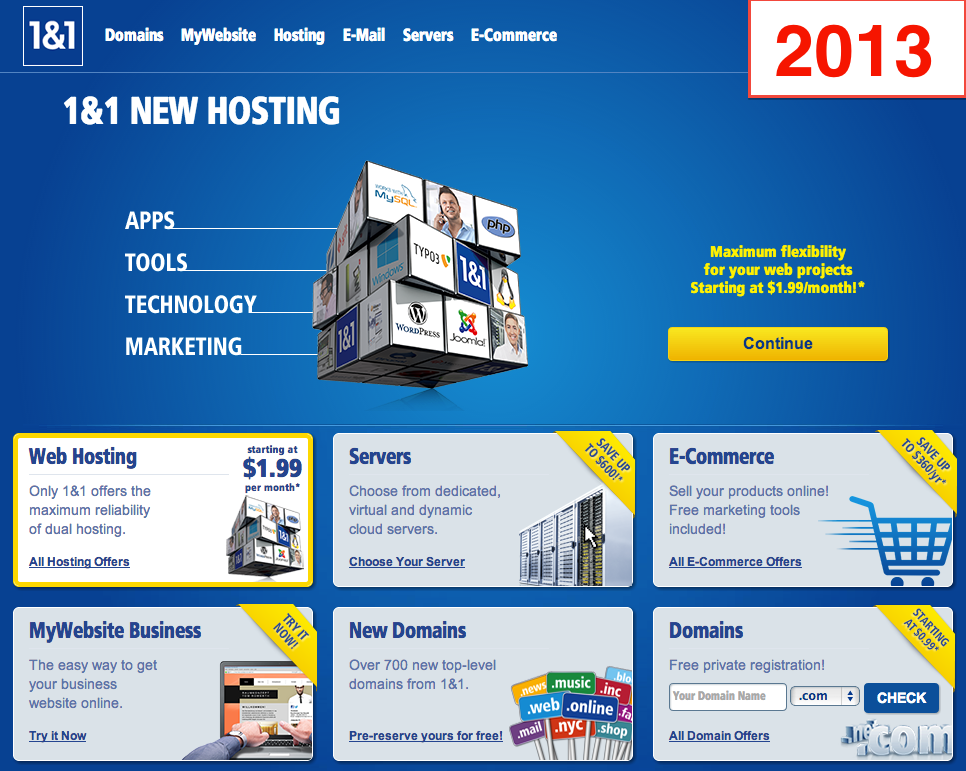
Major SMB service providers, such as 1&1, GoDaddy or Web.com have realized this and are offering marketing solutions for their clients.
Because again, making their clients’ websites successful goes beyond creating a website and hosting it, it’s about helping customers become successful online and generate more revenue which will lead to increased CLV (Customer Lifetime Value) of hosting providers customers.
“it’s about helping customers become successful online”
1&1 is already promoting marketing solutions in their homepage, are you?
Follow our series of posts for hosting providers, as we will explain how hosters can implement these solutions and how marketgoo can help.

